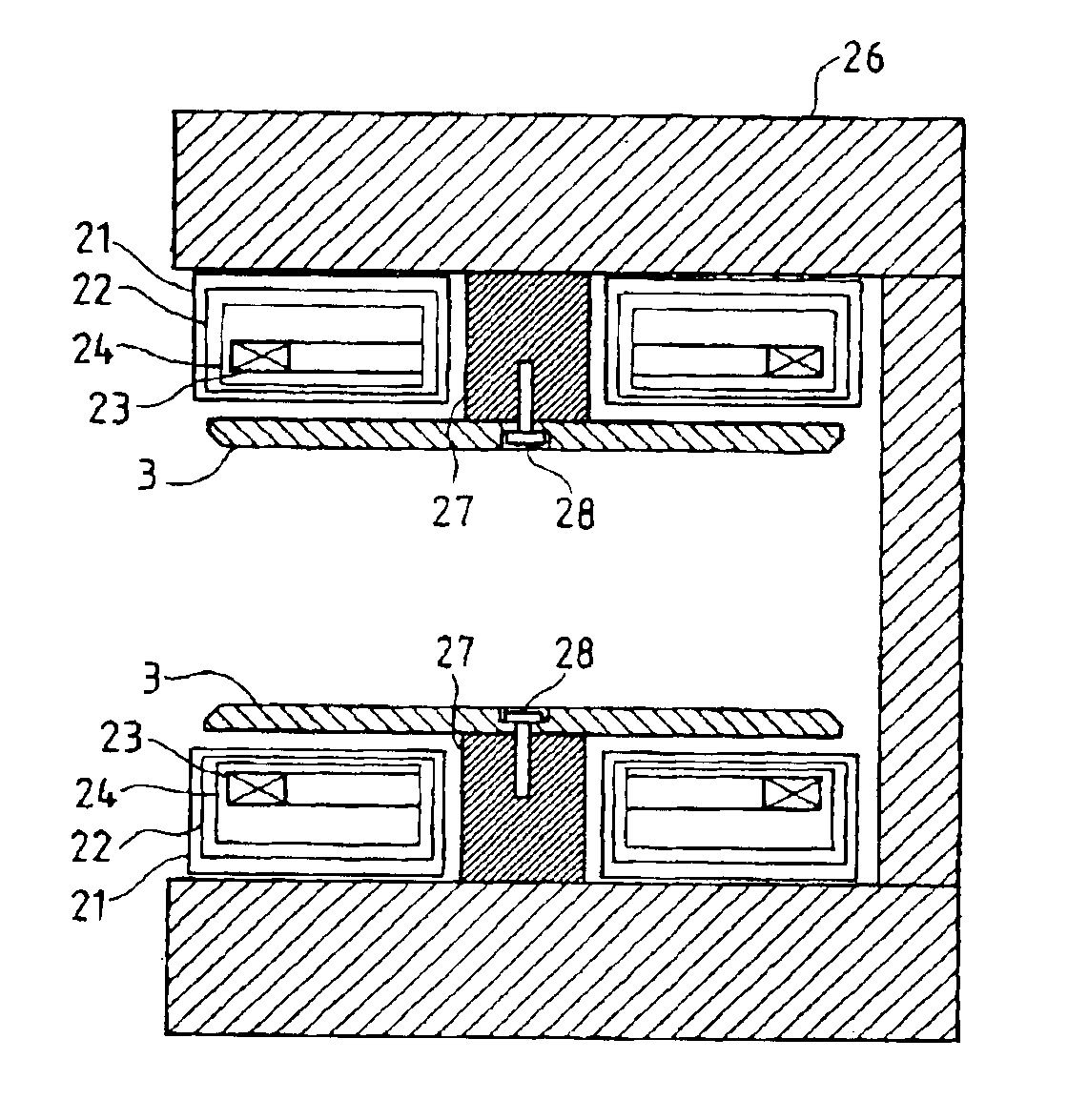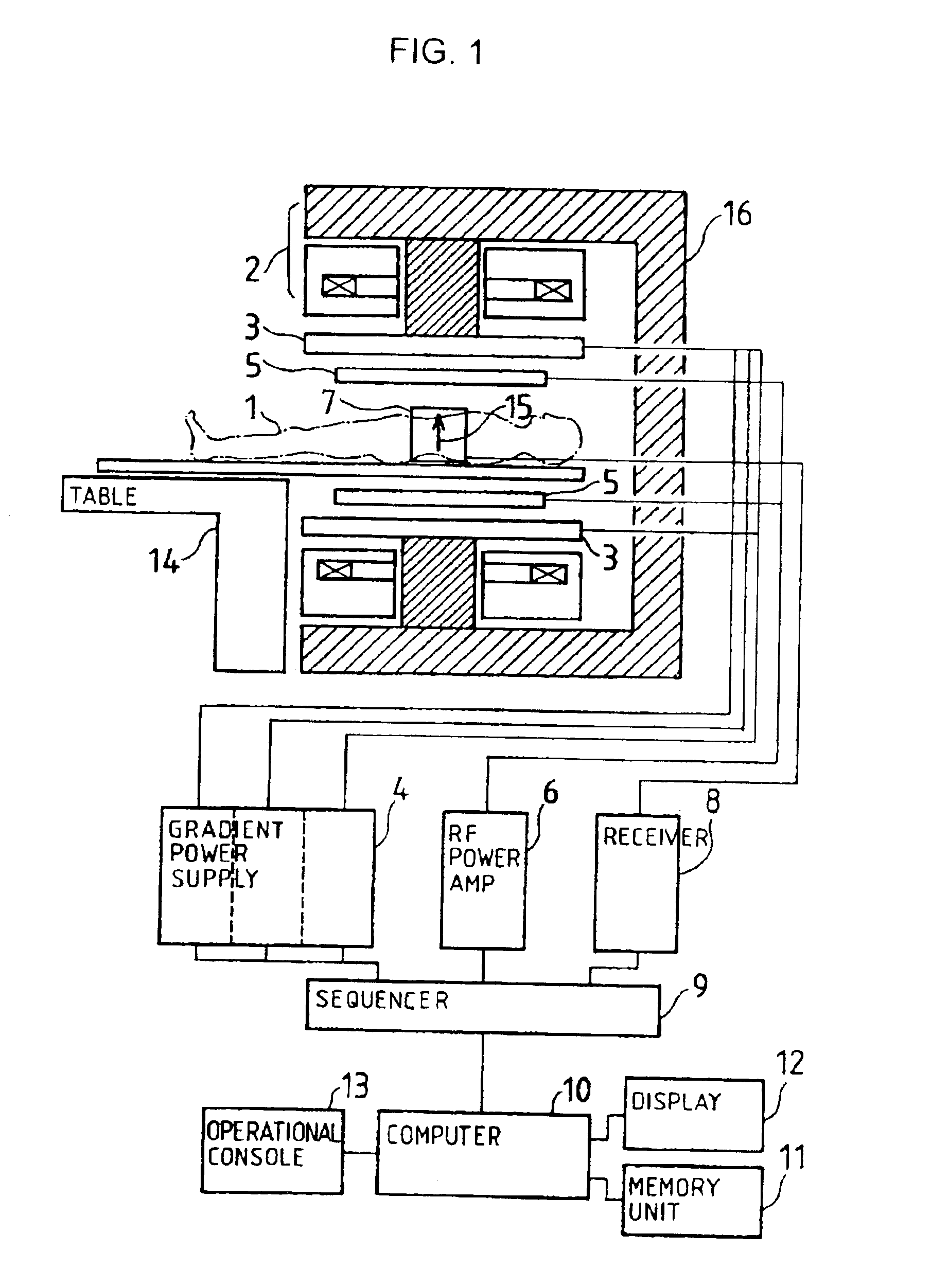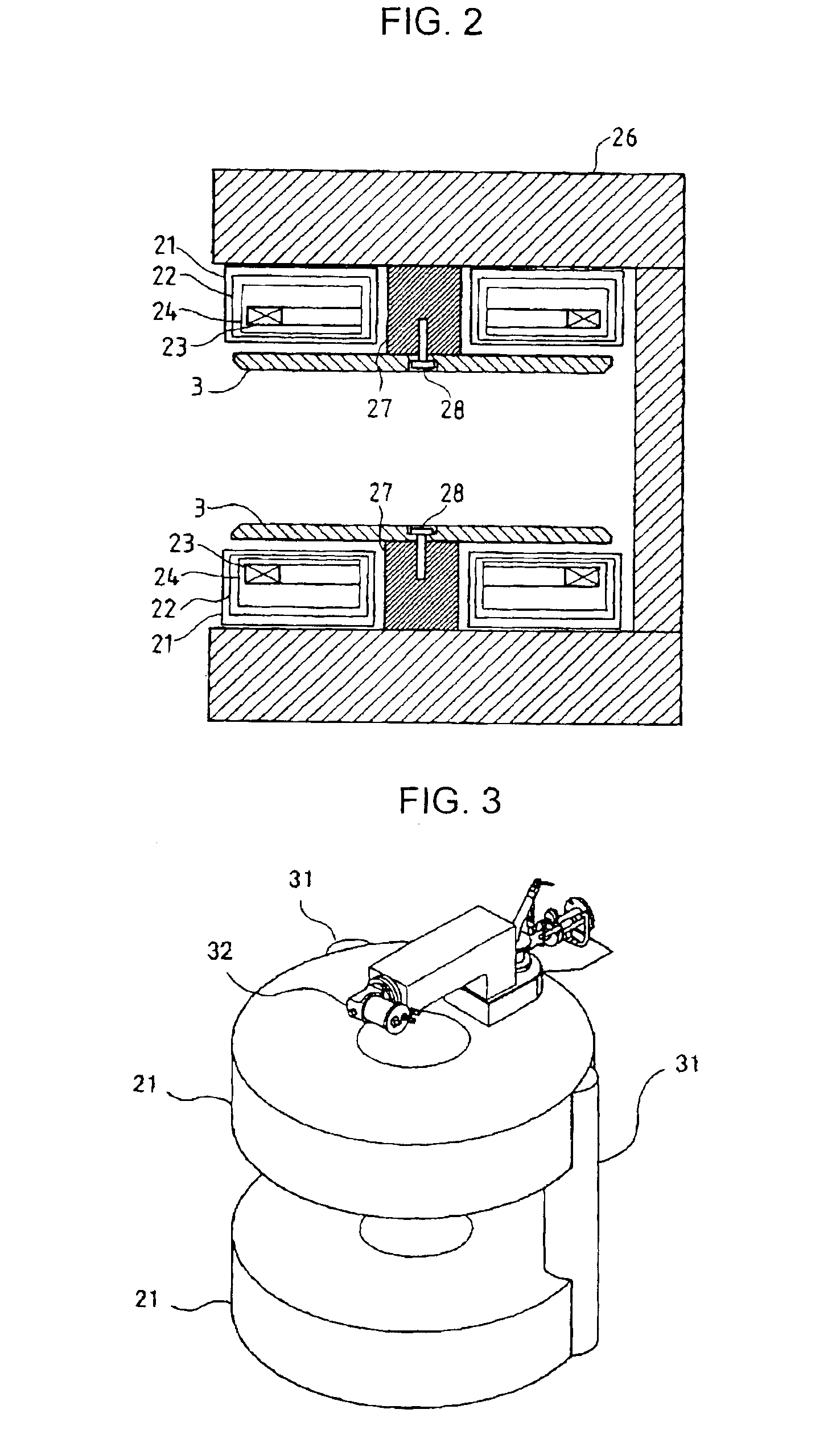Magnetic resonance imaging device and gradient magnetic field coil used for it
a magnetic field coil and magnetic resonance imaging technology, applied in the field of magnetic resonance imaging, can solve the problems of mechanical distortion and vibration, affecting the image quality of fixed objects, so as to reduce the noise caused by vibration, prevent the effect of deterioration of image quality and effective suppression of vibration
- Summary
- Abstract
- Description
- Claims
- Application Information
AI Technical Summary
Benefits of technology
Problems solved by technology
Method used
Image
Examples
first embodiment
[0073]FIG. 2 shows in more detail the structure of the static magnetic field generating magnet 2 and the gradient magnetic field coils 3 of the open MRI shown in FIG. 1 according to the present invention.
[0074]First, the structure of the static magnetic field generating magnet 2 will be described in detail. The static magnetic field generating magnet 2 comprises a pair of static magnetic field generating coils, upper and lower, disposed in doughnut-shaped cryostats 21. Liquid helium tanks 24 surrounded by thermal shield plates 22 are placed within the cryostats 21, and superconductive coils 23 are disposed in the liquid helium tanks 24. The inside of the cryostats 21 are evacuated so as to maintain the low temperature of the liquid helium. The liquid helium tanks 24 and the thermal shield plates 22 are supported by adiathermic wires (not shown) for preventing outside heat from entering, so as to reduce evaporation of the liquid helium. Incidentally, although only single thermal shie...
second embodiment
[0086]Next, the support structure of the gradient magnetic field coil in the present invention will be described.
[0087]FIG. 7 shows an open MRI apparatus according to the second embodiment. All of the structure, except for the installation structure of the static magnetic field generating magnets 2 and the gradient magnetic field coils 3, is the same as that shown in FIG. 2, and so the common structure is omitted in FIG. 7.
[0088]In the second embodiment, the static magnetic field generating magnet 2 is also a superconductive magnet. The structure of it is generally the same as that in the first embodiment, being comprised of a pair of upper and lower cryostats 71, thermal shield plates 72 within said cryostats 71, and liquid helium tanks 74 containing the superconductive coils 73. Plural thermal shield plates 72 may be provided in the same way as in the first embodiment, and plural superconductive coils 73 may be also installed. Further, the iron yoke 26, comprising a magnetic circu...
fourth embodiment
[0093]Next, the support structure of the gradient magnetic field coils in the MRI apparatus will be described with reference to FIGS. 9 and 10. FIG. 9 is a vertical section of the static magnetic field generating magnet, and FIG. 10 is its top view. This embodiment is different from the above-described three embodiments in the following points: The gradient magnetic field coil supporter is comprised of a first gradient magnetic field coil supporter of cylindrical shape and a second gradient magnetic field coil supporter of plate shape. The center of the gradient magnetic field coil 3a, which is arranged above the measurement space 25, is joined with the first cylindrical gradient magnetic field coil supporter 101a arranged within the air space provided in the center of the upper cryostat 21a, and thus the gradient magnetic field coil 3a is supported. The upper end of the first gradient magnetic field coil supporter 101a is joined with the center part of the second gradient magnetic...
PUM
 Login to View More
Login to View More Abstract
Description
Claims
Application Information
 Login to View More
Login to View More - R&D
- Intellectual Property
- Life Sciences
- Materials
- Tech Scout
- Unparalleled Data Quality
- Higher Quality Content
- 60% Fewer Hallucinations
Browse by: Latest US Patents, China's latest patents, Technical Efficacy Thesaurus, Application Domain, Technology Topic, Popular Technical Reports.
© 2025 PatSnap. All rights reserved.Legal|Privacy policy|Modern Slavery Act Transparency Statement|Sitemap|About US| Contact US: help@patsnap.com



